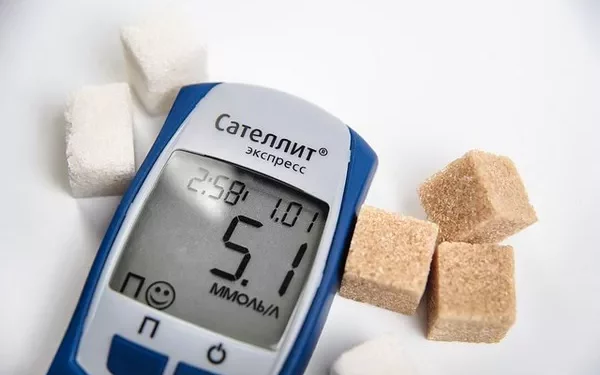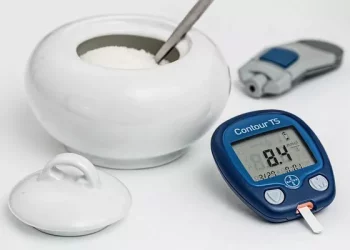Monitoring blood glucose levels is a critical aspect of managing diabetes and preventing complications. Glucose, a form of sugar, is the primary source of energy for the body’s cells. The body regulates glucose levels with the help of insulin, a hormone produced by the pancreas. When the body is unable to produce enough insulin, or it becomes resistant to insulin, glucose builds up in the bloodstream, leading to diabetes.
Understanding what glucose levels are considered within the diabetes range is essential for both diagnosis and management. This article will explore the different types of blood glucose tests used to diagnose diabetes, the specific glucose levels that indicate diabetes, and what those levels mean for individuals living with the condition. We will also discuss the importance of regular blood glucose monitoring and how maintaining optimal blood glucose levels can help prevent long-term complications.
Types of Blood Glucose Tests
There are several tests that healthcare providers use to measure blood glucose levels. These tests are essential for diagnosing diabetes and monitoring blood sugar levels for those already diagnosed with the condition. The key tests used to assess blood glucose levels include the fasting plasma glucose (FPG) test, the oral glucose tolerance test (OGTT), the hemoglobin A1c test, and random blood glucose tests.
Fasting Plasma Glucose (FPG) Test
The FPG test measures blood glucose levels after an individual has fasted for at least 8 hours. This test is commonly used to diagnose diabetes and prediabetes. A fasting blood glucose level is considered normal if it is below 100 mg/dL (5.6 mmol/L). A result of 100–125 mg/dL (5.6–6.9 mmol/L) indicates prediabetes, and a result of 126 mg/dL (7.0 mmol/L) or higher on two separate occasions is used to diagnose diabetes.
Oral Glucose Tolerance Test (OGTT)
The OGTT is a more involved test that requires the individual to fast overnight, drink a sugary solution, and then have their blood glucose levels tested at intervals over the next two hours. This test is primarily used to diagnose gestational diabetes during pregnancy but can also be used to diagnose Type 2 diabetes. A normal result is below 140 mg/dL (7.8 mmol/L) two hours after drinking the glucose solution. If the result is 140–199 mg/dL (7.8–11.0 mmol/L), the individual is classified as having prediabetes. A level of 200 mg/dL (11.1 mmol/L) or higher indicates diabetes.
Hemoglobin A1c Test
The hemoglobin A1c test measures the average blood glucose levels over the past 2 to 3 months. It is a useful test for diagnosing diabetes and for monitoring long-term blood glucose control. An A1c level of 5.6% or lower is considered normal, while an A1c level between 5.7% and 6.4% indicates prediabetes. A result of 6.5% or higher on two separate occasions is used to diagnose diabetes.
Random Blood Glucose Test
A random blood glucose test measures blood glucose at any time of the day, regardless of when the person last ate. This test is often used in emergency situations or for people who experience symptoms of high blood sugar. A random blood glucose level of 200 mg/dL (11.1 mmol/L) or higher, along with symptoms of diabetes such as frequent urination and excessive thirst, can indicate diabetes.
Glucose Levels and Diabetes Diagnosis
The specific blood glucose levels that are considered in the diabetes range vary depending on the type of test used. It is important to note that these levels are used as guidelines for diagnosis. Diabetes is diagnosed based on a combination of factors, including blood glucose test results and the presence of symptoms such as frequent urination, fatigue, increased thirst, and blurred vision.
Fasting Plasma Glucose (FPG) Test
Normal range: Below 100 mg/dL (5.6 mmol/L)
Prediabetes (impaired fasting glucose): 100–125 mg/dL (5.6–6.9 mmol/L)
Diabetes: 126 mg/dL (7.0 mmol/L) or higher on two separate occasions
Oral Glucose Tolerance Test (OGTT)
Normal range: Below 140 mg/dL (7.8 mmol/L) after two hours
Prediabetes (impaired glucose tolerance): 140–199 mg/dL (7.8–11.0 mmol/L) after two hours
Diabetes: 200 mg/dL (11.1 mmol/L) or higher after two hours
Hemoglobin A1c Test
Normal range: Below 5.7%
Prediabetes: 5.7%–6.4%
Diabetes: 6.5% or higher on two separate occasions
Random Blood Glucose Test
Diabetes: 200 mg/dL (11.1 mmol/L) or higher, accompanied by symptoms of diabetes
What Do These Glucose Levels Mean for Diabetes Management?
For individuals who have been diagnosed with diabetes, understanding the glucose levels within the diabetes range is crucial for effective management. Diabetes is a lifelong condition, and the goal of management is to maintain blood glucose levels within a target range that minimizes the risk of complications. Complications of poorly managed diabetes include heart disease, kidney damage, nerve damage, and blindness, among others.
The ideal target range for blood glucose levels varies depending on the individual and their treatment plan. However, general guidelines for blood glucose management are as follows:
Before meals (fasting blood glucose): 80–130 mg/dL (4.4–7.2 mmol/L)
1–2 hours after meals (postprandial blood glucose): Less than 180 mg/dL (10.0 mmol/L)
Hemoglobin A1c (average blood glucose over 2–3 months): Below 7.0% for most adults with diabetes, though target A1c levels may vary based on age, health status, and treatment goals.
Monitoring Blood Glucose Levels
Regular blood glucose monitoring is essential for people with diabetes. It provides important feedback on how well the body is managing blood glucose and helps guide decisions about diet, exercise, and medication. Blood glucose monitoring can be done using a traditional blood glucose meter or continuous glucose monitoring (CGM) systems. Here are some key points to consider when monitoring blood glucose:
Self-Monitoring Blood Glucose (SMBG): Many individuals with diabetes use a blood glucose meter to check their glucose levels at home. SMBG allows individuals to track their blood glucose throughout the day, especially before and after meals, and make adjustments to their treatment as necessary.
Continuous Glucose Monitoring (CGM): CGM systems are wearable devices that provide continuous readings of blood glucose levels throughout the day and night. These devices are particularly useful for individuals with Type 1 diabetes or those with Type 2 diabetes who have difficulty maintaining stable blood glucose levels.
Frequency of Monitoring: The frequency of blood glucose testing varies based on the type of diabetes, treatment plan, and individual needs. People with Type 1 diabetes typically need to test their blood glucose several times a day, while individuals with Type 2 diabetes may need less frequent monitoring.
Interpreting Blood Glucose Readings: Blood glucose levels should be interpreted in the context of meals, medications, and physical activity. For example, postprandial blood glucose levels (after meals) will naturally be higher than fasting blood glucose levels, but they should still fall within target ranges.
Hypoglycemia and Hyperglycemia: Risks of Uncontrolled Glucose Levels
Both high and low blood glucose levels can be dangerous if not properly managed. Here’s an overview of the risks associated with uncontrolled glucose levels:
Hypoglycemia (Low Blood Glucose)
Hypoglycemia occurs when blood glucose levels drop below 70 mg/dL (3.9 mmol/L). It can cause symptoms such as shakiness, dizziness, sweating, confusion, and irritability. In severe cases, hypoglycemia can lead to unconsciousness or seizures.
To treat hypoglycemia, individuals should consume a fast-acting carbohydrate, such as glucose tablets, fruit juice, or regular soda. It is important to monitor blood glucose levels frequently to avoid hypoglycemia, especially if taking insulin or certain oral medications that can cause low blood sugar.
Hyperglycemia (High Blood Glucose)
Hyperglycemia occurs when blood glucose levels are consistently higher than the target range. Prolonged hyperglycemia can damage blood vessels and organs, leading to complications like diabetic retinopathy, neuropathy, kidney disease, and cardiovascular disease.
If blood glucose levels are consistently elevated, individuals may need to adjust their treatment plan, which may include changes in diet, exercise, or medication. Insulin therapy may be required to bring high blood glucose levels under control.
Conclusion
Understanding the glucose levels that are within the diabetes range is vital for managing diabetes effectively and reducing the risk of complications. Blood glucose levels are categorized into different ranges depending on the type of test used, and it is important to follow the guidelines for diagnosis and management. Regular blood glucose monitoring, combined with lifestyle changes and proper treatment, can help individuals with diabetes maintain blood sugar control and lead a healthy life.
A diabetes-friendly diet, regular physical activity, and medication adherence are essential for managing blood glucose levels. Additionally, ongoing medical care and monitoring are crucial for adjusting treatment plans as needed. By keeping blood glucose levels within the target range, individuals with diabetes can reduce the risk of complications and enjoy a better quality of life.
It is important for individuals with diabetes to work closely with their healthcare providers to develop a personalized treatment plan that fits their unique needs and health goals.
Related topics:
How Does a Glucometer Measure Blood Sugar?



























